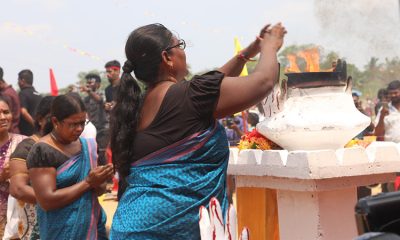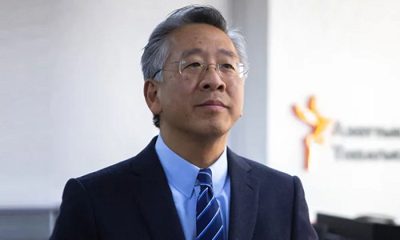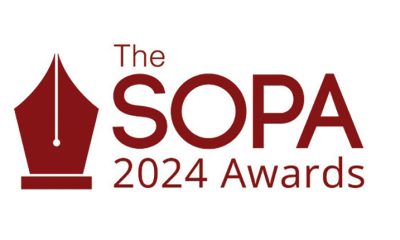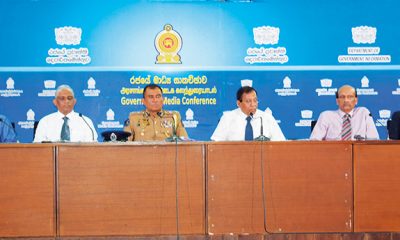Features
Confronting Capitalist system in Sri Lanka: 1824-2024
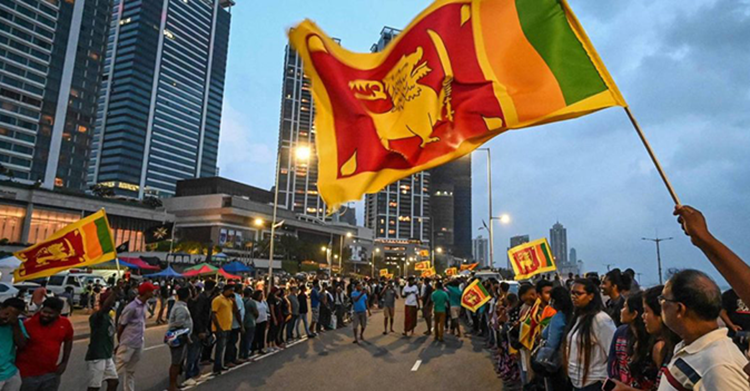
Historical transformation from Feudalism to Capitalism by 1824
by Jayampathy Molligoda
As we know, on March 2, 1815 the Kandyan Kingdom was formally ceded to the British by signing the Kandyan convention by the chiefs and the Governor, Brownrigg on behalf of the British. Thereafter, the year 1818 marks a real turning point with the defeat of the great rebellion of Uva- Wellassa, where the resistance of the people was broken and the British had laid claim to an all -island control.
According to eminent Historian, Professor K.M de Silva, British could not set up a unified administrative system for the whole island until the Colebrooke -Cameron reforms of 1829-1832, thus providing the administrative and legislative framework for a more liberal form of government for Sri Lanka. The establishment of plantation agriculture consolidated the unification by providing an economic basis for it. In the 1820’s, Governor Barnes’s network of roads built with the help of the traditional ‘rajakariya’ system (a feature of feudalist society) placed the control of Sri Lanka firmly under British hands.
As for the Island’s trade, the European agency houses were established in 1824 and then Governor Barnes decided to stop importing goods on account of the government, thus halting the monopolistic structure of the government’s economic activities through East India Company. Based on Colebrooke recommendations, the ‘Savings Bank of Ceylon’ was established in 1832 and money became freely available. Several historians and scholars including Ralph Peiris, Senaka Bandaranaike, Professor W.I Siriweera are of the view that pre-modern Sri Lankan society was feudal.
From the middle of the first millennium up to 1830, ‘feudal’ characteristics were predominant in the Sri Lankan society. The colonial powers including the British continued to maintain the state trade monopoly until the period up to 1825. Thereafter, the road and railway network developed and thus facilitated easy communication and opportunities for social mobility.
Internal and foreign trade expanded along with banking and money circulation. Governor Barnes (1824) is credited with the construction of the first major road under the British where he constructed a better and shorter road from Colombo to Kandy. Feudalism withered away with Colebrooke reforms and commercial capitalism in Sri Lanka started with the plantation crop culture.
The foundation of a class society was laid only with the implementation of Colebrooke reforms. As a result of the capitalist transformation, there emerged a class society based on the production; bourgeoisie (rich), middle class and a labour force. Tea and coffee plantation workers were brought in from South India and their living conditions were poor.
In contrast to the plantation workers, urban workforce experienced some salutary effects of transformation from feudalism to capitalism as the rigidity of the caste system was reduced because birth status was not a condition of employment. The majority of the labour force outside the plantation sector were Sri Lankans but labour employment was open to all ethnic groups and both sexes, although most of the laborers were male. Those labourers who settled down in Colombo (and few other main cities) lived in slums where sanitary conditions were unsatisfactory. ( Prof W.I Siriweera,2023)
Socio/ economic transformation by 1924; after 100 years under capitalism:
The growth of the plantation sector and means of communications and associated infrastructure development in road and rail transportation greatly contributed to commercialization. Cities such as Colombo, Galle, Matara, Kandy, Jaffna, Anuradhapura, Nuwara Eliya and many other cities developed considerably. Shops were established near railway stations and even some imported commodities were freely available in village boutiques and products of the villages began to be circulated in other villages, although the local hand-loom industry was affected.
According to published literature by eminent historians, only the plantation and merchandize capital had contributed to capitalist growth and hardly any industrial manufacturing growth, except small scale coir and coconut oil industries. The production of arrack and toddy became popular and the government granted permission to open taverns to earn revenue to the general treasury and as a result, crimes too increased and many other social issues cropped up.
By the 1920’s, we have seen a contraction of world trade due to World War 1914-1920 followed by the Great Depression of the late 1920’s. The British Government imposed restrictions on shipping and controls on tea and coconut imports from Sri Lanka. With the disruption of food imports and stagnation of the plantation sector, there had been a revival of interest in peasant agriculture and development of the dry zone.
Further, the government wanted to liberalize the system of alienating the crown lands in order to accommodate the peasants. In the 1920’s under a new system, leasehold tenure system was granted to the peasants. It was also decided to appoint a Land Commission and there was a close link between the reappraisal of the land policy and the increase in population (22.5 million according to 2021 census from 1.5 million 100 years ago.)
Further improvements to the Capitalist system through Constitutional bases during the last 100 years-1924 -2023 To date:
With the formation of the Ceylon National Congress (CNC) under P. Arunachalam, the educated Sri Lankans agitated for greater share in the administration. As a result, more reforms were introduced during the 1920’s. One reform was popularly known as Manning reforms and the colonial office in 1927 appointed the ‘Donoughmore’ commission to make a new constitution.
One of the major reasons for the reforms was the Anti-Imperialist movements originating in Sri Lanka with the ‘Suriyamal’ movement in 1926 and formation of Youth leagues by Marxists (LSSP, CPSL). During this period, immigrant workers joined the indigenous working class under A.E. Gunasinha’s leadership. Urban workforce resorted to strike action due to poor working conditions.
Exactly 100 years under the capitalist system, there was a general strike in 1923 and in Lake House in 1929 and the Galle Face Hotel in 1934. After the formation of the State Council in 1931, the CNC continuously agitated for complete independence. As the Indian nationalist movement gained ground, the British government outlined a set of proposals in 1943, but Marxists opposed the transitional status, although moderates agreed to the proposals.
The white paper on constitutional reforms, which included Soulbury proposals, was placed before the State Council in 1945 by D.S Senanayake and was approved. Later, he informed the colonial office that he could not successfully challenge the Marxists if dominion status was not granted.
On August 15, 1947, the first election to the House of Representatives was held under the Soulbury constitution and the opening of parliament on February 4, 1948 marked the end of the status of crown colony. During the next 70 years. The Sri Lankan leaders continued to maintain the capitalist system of governance up-to- date (Although some attempts were made to change it during the period 1971-1974 by Marxists within the 1970 government of Mrs Bandaranaike and outside, but it was not successful).
The Constitution titled, The Democratic Socialist Republic of Sri Lanka- 1979 by President J.R Jayewardene (with 21 amendments so far) introduced the present ‘Executive Presidential system’ and is still continuing. These constitutional provisions provided a solid base for smooth functioning of the capitalist system although some cracks have emerged. The writer is of the view, that at present, the majority of people are dissatisfied with the prevailing governance system.
Present status of the political economy and living standards of the people:
Much has been written on the failure of successive governments since gaining independence to provide even some basic needs of the people let alone improving the quality of life and overall economic development in Sri Lanka; therefore, there is no need to repeat over and over again some facts and figures to justify this claim.
As this writer has explained in many articles published since 2014, the Sri Lankan economy has been recording a persistently high ‘twin deficits’ meaning (1) government budget deficits since independence and (2) Balance of Payments (BOP) current account deficit with rest of the world due to deficit in exports minus imports. And CBSL has been compelled to resort to ‘money printing’ more than what is required/desired level while the successive governments continued to borrow to bridge the gap thus increasing foreign debt service beyond sustainable levels.
The real issue has been that our exports as a % of GDP has come down from 28% in four to five decades to 12% especially since 2014 to date. As explained earlier, since 1824 mainly the merchandise, capital had contributed to our economy’s capitalist growth and hardly any industrial manufacturing growth. Even in the case of agricultural and plantation crops, due to high cost of production and low yields compared to products from other countries, our exporters have not been able to compete in the global marketplace on ‘cost leadership strategy’.
Many have already expressed serious concerns about the deep economic crisis in the country and its impact on the people of Sri Lanka, especially the poor and the vulnerable, particularly women. The government of the day has not focussed enough to address those badly affected segments, including SMEs, construction industry etc. and address those vulnerabilities. Already, poor and some middle-class families became poorer.
According to a survey conducted by the Department of Census and statistics recently, some 60% of the household’s income has decreased. Income disparity between the rich, middle class and the poor has also increased. The Sri Lankan society’s poverty problems are closely related to this wider problem- namely, the growing gap in the share of income going to the rich, the middle class and the poor. The recent increases of VAT up to 18% in addition to price increases of fuel, electricity, water, transport, food items etc. have really aggravated the burden of the middle class and poor.
The grand idea of capitalism is that those with capital will apply it to create more wealth that enables to create more employment and jobs for everyone. Not only the wealthy benefit but their wealth will trickle down to other classes as well. However, according to more comprehensive research studies done recently by eminent economics of the calibre of Prof. Joseph Stiglitz and Thomas Piketty, the inequality will worsen under free market capitalism.
Growing income disparity is not only a disaster for the poor, but also a threat to the rich. Poverty breeds crime, beggars, prostitution, massive social protest movements and inability to gain access to education and training, which will seriously affect developing our human resource requirements for improving businesses.
These economists urge the governments to embrace real solutions: Investing in education, science, technology and infrastructure, offering more help to the children of the poor, doing more to restore the economy to full employment, introducing more effective and proper tax policies etc. It is essential to ensure that adequate social protection is provided. They believe our choice is not between growth and fairness- with the right policies we can choose and achieve both. (For a more thorough discussion of the adverse economic consequences of inequality, please see Joseph Stiglitz, ‘The Price of Inequality’ and Thomas Piketty, ‘Capital in the twenty -First century’)
Need to project immediate future scenario during the election year- 2024:
In the event, the Government is unable to provide these solutions, social unrest will further increase and the ruling party unpopularity will increase, thus paving way for political forces demanding a General or Presidential elections sooner or later. Once again, the government of the day would have to abandon the IMF policy prescription. It is interesting to note that even the IMF, an organisation not taking radical positions, has taken up the position that inequality is associated with instability. For details, please see ‘Inequality and unsustainable growth; two sides of the same coin? – IMF staff discussion note- 2011’.
The writer is of the view that in the new year 2024 (exactly after 200 years of capitalist form of governance) there is a probability or a likely scenario that a major transformation of a ‘system change’ may take place including a complete abolition of the Executive Presidential system. It is not impossible to obtain two thirds majority in Parliament to change the Constitution and adopt a new constitution approved by people in a referendum by early 2025 and thus ending the capitalist system that prevailed over 200 years in Sri Lanka. Whether it will provide tangible benefits to Sri Lanka and its people is yet to be ascertained.
(The author is a freelance writer who previously served as Executive Deputy Chairman/CEO at Bogawantalawa Tea Estates PLC and as Chairman, Sri Lanka Tea Board)
Features
The heart-friendly health minister

by Dr Gotabhya Ranasinghe
Senior Consultant Cardiologist
National Hospital Sri Lanka
When we sought a meeting with Hon Dr. Ramesh Pathirana, Minister of Health, he graciously cleared his busy schedule to accommodate us. Renowned for his attentive listening and deep understanding, Minister Pathirana is dedicated to advancing the health sector. His openness and transparency exemplify the qualities of an exemplary politician and minister.
Dr. Palitha Mahipala, the current Health Secretary, demonstrates both commendable enthusiasm and unwavering support. This combination of attributes makes him a highly compatible colleague for the esteemed Minister of Health.
Our discussion centered on a project that has been in the works for the past 30 years, one that no other minister had managed to advance.
Minister Pathirana, however, recognized the project’s significance and its potential to revolutionize care for heart patients.
The project involves the construction of a state-of-the-art facility at the premises of the National Hospital Colombo. The project’s location within the premises of the National Hospital underscores its importance and relevance to the healthcare infrastructure of the nation.
This facility will include a cardiology building and a tertiary care center, equipped with the latest technology to handle and treat all types of heart-related conditions and surgeries.
Securing funding was a major milestone for this initiative. Minister Pathirana successfully obtained approval for a $40 billion loan from the Asian Development Bank. With the funding in place, the foundation stone is scheduled to be laid in September this year, and construction will begin in January 2025.
This project guarantees a consistent and uninterrupted supply of stents and related medications for heart patients. As a result, patients will have timely access to essential medical supplies during their treatment and recovery. By securing these critical resources, the project aims to enhance patient outcomes, minimize treatment delays, and maintain the highest standards of cardiac care.
Upon its fruition, this monumental building will serve as a beacon of hope and healing, symbolizing the unwavering dedication to improving patient outcomes and fostering a healthier society.We anticipate a future marked by significant progress and positive outcomes in Sri Lanka’s cardiovascular treatment landscape within the foreseeable timeframe.
Features
A LOVING TRIBUTE TO JESUIT FR. ALOYSIUS PIERIS ON HIS 90th BIRTHDAY

by Fr. Emmanuel Fernando, OMI
Jesuit Fr. Aloysius Pieris (affectionately called Fr. Aloy) celebrated his 90th birthday on April 9, 2024 and I, as the editor of our Oblate Journal, THE MISSIONARY OBLATE had gone to press by that time. Immediately I decided to publish an article, appreciating the untiring selfless services he continues to offer for inter-Faith dialogue, the renewal of the Catholic Church, his concern for the poor and the suffering Sri Lankan masses and to me, the present writer.
It was in 1988, when I was appointed Director of the Oblate Scholastics at Ampitiya by the then Oblate Provincial Fr. Anselm Silva, that I came to know Fr. Aloy more closely. Knowing well his expertise in matters spiritual, theological, Indological and pastoral, and with the collaborative spirit of my companion-formators, our Oblate Scholastics were sent to Tulana, the Research and Encounter Centre, Kelaniya, of which he is the Founder-Director, for ‘exposure-programmes’ on matters spiritual, biblical, theological and pastoral. Some of these dimensions according to my view and that of my companion-formators, were not available at the National Seminary, Ampitiya.
Ever since that time, our Oblate formators/ accompaniers at the Oblate Scholasticate, Ampitiya , have continued to send our Oblate Scholastics to Tulana Centre for deepening their insights and convictions regarding matters needed to serve the people in today’s context. Fr. Aloy also had tried very enthusiastically with the Oblate team headed by Frs. Oswald Firth and Clement Waidyasekara to begin a Theologate, directed by the Religious Congregations in Sri Lanka, for the contextual formation/ accompaniment of their members. It should very well be a desired goal of the Leaders / Provincials of the Religious Congregations.
Besides being a formator/accompanier at the Oblate Scholasticate, I was entrusted also with the task of editing and publishing our Oblate journal, ‘The Missionary Oblate’. To maintain the quality of the journal I continue to depend on Fr. Aloy for his thought-provoking and stimulating articles on Biblical Spirituality, Biblical Theology and Ecclesiology. I am very grateful to him for his generous assistance. Of late, his writings on renewal of the Church, initiated by Pope St. John XX111 and continued by Pope Francis through the Synodal path, published in our Oblate journal, enable our readers to focus their attention also on the needed renewal in the Catholic Church in Sri Lanka. Fr. Aloy appreciated very much the Synodal path adopted by the Jesuit Pope Francis for the renewal of the Church, rooted very much on prayerful discernment. In my Religious and presbyteral life, Fr.Aloy continues to be my spiritual animator / guide and ongoing formator / acccompanier.
Fr. Aloysius Pieris, BA Hons (Lond), LPh (SHC, India), STL (PFT, Naples), PhD (SLU/VC), ThD (Tilburg), D.Ltt (KU), has been one of the eminent Asian theologians well recognized internationally and one who has lectured and held visiting chairs in many universities both in the West and in the East. Many members of Religious Congregations from Asian countries have benefited from his lectures and guidance in the East Asian Pastoral Institute (EAPI) in Manila, Philippines. He had been a Theologian consulted by the Federation of Asian Bishops’ Conferences for many years. During his professorship at the Gregorian University in Rome, he was called to be a member of a special group of advisers on other religions consulted by Pope Paul VI.
Fr. Aloy is the author of more than 30 books and well over 500 Research Papers. Some of his books and articles have been translated and published in several countries. Among those books, one can find the following: 1) The Genesis of an Asian Theology of Liberation (An Autobiographical Excursus on the Art of Theologising in Asia, 2) An Asian Theology of Liberation, 3) Providential Timeliness of Vatican 11 (a long-overdue halt to a scandalous millennium, 4) Give Vatican 11 a chance, 5) Leadership in the Church, 6) Relishing our faith in working for justice (Themes for study and discussion), 7) A Message meant mainly, not exclusively for Jesuits (Background information necessary for helping Francis renew the Church), 8) Lent in Lanka (Reflections and Resolutions, 9) Love meets wisdom (A Christian Experience of Buddhism, 10) Fire and Water 11) God’s Reign for God’s poor, 12) Our Unhiddden Agenda (How we Jesuits work, pray and form our men). He is also the Editor of two journals, Vagdevi, Journal of Religious Reflection and Dialogue, New Series.
Fr. Aloy has a BA in Pali and Sanskrit from the University of London and a Ph.D in Buddhist Philosophy from the University of Sri Lankan, Vidyodaya Campus. On Nov. 23, 2019, he was awarded the prestigious honorary Doctorate of Literature (D.Litt) by the Chancellor of the University of Kelaniya, the Most Venerable Welamitiyawe Dharmakirthi Sri Kusala Dhamma Thera.
Fr. Aloy continues to be a promoter of Gospel values and virtues. Justice as a constitutive dimension of love and social concern for the downtrodden masses are very much noted in his life and work. He had very much appreciated the commitment of the late Fr. Joseph (Joe) Fernando, the National Director of the Social and Economic Centre (SEDEC) for the poor.
In Sri Lanka, a few religious Congregations – the Good Shepherd Sisters, the Christian Brothers, the Marist Brothers and the Oblates – have invited him to animate their members especially during their Provincial Congresses, Chapters and International Conferences. The mainline Christian Churches also have sought his advice and followed his seminars. I, for one, regret very much, that the Sri Lankan authorities of the Catholic Church –today’s Hierarchy—- have not sought Fr.
Aloy’s expertise for the renewal of the Catholic Church in Sri Lanka and thus have not benefited from the immense store of wisdom and insight that he can offer to our local Church while the Sri Lankan bishops who governed the Catholic church in the immediate aftermath of the Second Vatican Council (Edmund Fernando OMI, Anthony de Saram, Leo Nanayakkara OSB, Frank Marcus Fernando, Paul Perera,) visited him and consulted him on many matters. Among the Tamil Bishops, Bishop Rayappu Joseph was keeping close contact with him and Bishop J. Deogupillai hosted him and his team visiting him after the horrible Black July massacre of Tamils.
Features
A fairy tale, success or debacle

Sri Lanka-Singapore Free Trade Agreement
By Gomi Senadhira
senadhiragomi@gmail.com
“You might tell fairy tales, but the progress of a country cannot be achieved through such narratives. A country cannot be developed by making false promises. The country moved backward because of the electoral promises made by political parties throughout time. We have witnessed that the ultimate result of this is the country becoming bankrupt. Unfortunately, many segments of the population have not come to realize this yet.” – President Ranil Wickremesinghe, 2024 Budget speech
Any Sri Lankan would agree with the above words of President Wickremesinghe on the false promises our politicians and officials make and the fairy tales they narrate which bankrupted this country. So, to understand this, let’s look at one such fairy tale with lots of false promises; Ranil Wickremesinghe’s greatest achievement in the area of international trade and investment promotion during the Yahapalana period, Sri Lanka-Singapore Free Trade Agreement (SLSFTA).
It is appropriate and timely to do it now as Finance Minister Wickremesinghe has just presented to parliament a bill on the National Policy on Economic Transformation which includes the establishment of an Office for International Trade and the Sri Lanka Institute of Economics and International Trade.
Was SLSFTA a “Cleverly negotiated Free Trade Agreement” as stated by the (former) Minister of Development Strategies and International Trade Malik Samarawickrama during the Parliamentary Debate on the SLSFTA in July 2018, or a colossal blunder covered up with lies, false promises, and fairy tales? After SLSFTA was signed there were a number of fairy tales published on this agreement by the Ministry of Development Strategies and International, Institute of Policy Studies, and others.
However, for this article, I would like to limit my comments to the speech by Minister Samarawickrama during the Parliamentary Debate, and the two most important areas in the agreement which were covered up with lies, fairy tales, and false promises, namely: revenue loss for Sri Lanka and Investment from Singapore. On the other important area, “Waste products dumping” I do not want to comment here as I have written extensively on the issue.
1. The revenue loss
During the Parliamentary Debate in July 2018, Minister Samarawickrama stated “…. let me reiterate that this FTA with Singapore has been very cleverly negotiated by us…. The liberalisation programme under this FTA has been carefully designed to have the least impact on domestic industry and revenue collection. We have included all revenue sensitive items in the negative list of items which will not be subject to removal of tariff. Therefore, 97.8% revenue from Customs duty is protected. Our tariff liberalisation will take place over a period of 12-15 years! In fact, the revenue earned through tariffs on goods imported from Singapore last year was Rs. 35 billion.
The revenue loss for over the next 15 years due to the FTA is only Rs. 733 million– which when annualised, on average, is just Rs. 51 million. That is just 0.14% per year! So anyone who claims the Singapore FTA causes revenue loss to the Government cannot do basic arithmetic! Mr. Speaker, in conclusion, I call on my fellow members of this House – don’t mislead the public with baseless criticism that is not grounded in facts. Don’t look at petty politics and use these issues for your own political survival.”
I was surprised to read the minister’s speech because an article published in January 2018 in “The Straits Times“, based on information released by the Singaporean Negotiators stated, “…. With the FTA, tariff savings for Singapore exports are estimated to hit $10 million annually“.
As the annual tariff savings (that is the revenue loss for Sri Lanka) calculated by the Singaporean Negotiators, Singaporean $ 10 million (Sri Lankan rupees 1,200 million in 2018) was way above the rupees’ 733 million revenue loss for 15 years estimated by the Sri Lankan negotiators, it was clear to any observer that one of the parties to the agreement had not done the basic arithmetic!
Six years later, according to a report published by “The Morning” newspaper, speaking at the Committee on Public Finance (COPF) on 7th May 2024, Mr Samarawickrama’s chief trade negotiator K.J. Weerasinghehad had admitted “…. that forecasted revenue loss for the Government of Sri Lanka through the Singapore FTA is Rs. 450 million in 2023 and Rs. 1.3 billion in 2024.”
If these numbers are correct, as tariff liberalisation under the SLSFTA has just started, we will pass Rs 2 billion very soon. Then, the question is how Sri Lanka’s trade negotiators made such a colossal blunder. Didn’t they do their basic arithmetic? If they didn’t know how to do basic arithmetic they should have at least done their basic readings. For example, the headline of the article published in The Straits Times in January 2018 was “Singapore, Sri Lanka sign FTA, annual savings of $10m expected”.
Anyway, as Sri Lanka’s chief negotiator reiterated at the COPF meeting that “…. since 99% of the tariffs in Singapore have zero rates of duty, Sri Lanka has agreed on 80% tariff liberalisation over a period of 15 years while expecting Singapore investments to address the imbalance in trade,” let’s turn towards investment.
Investment from Singapore
In July 2018, speaking during the Parliamentary Debate on the FTA this is what Minister Malik Samarawickrama stated on investment from Singapore, “Already, thanks to this FTA, in just the past two-and-a-half months since the agreement came into effect we have received a proposal from Singapore for investment amounting to $ 14.8 billion in an oil refinery for export of petroleum products. In addition, we have proposals for a steel manufacturing plant for exports ($ 1 billion investment), flour milling plant ($ 50 million), sugar refinery ($ 200 million). This adds up to more than $ 16.05 billion in the pipeline on these projects alone.
And all of these projects will create thousands of more jobs for our people. In principle approval has already been granted by the BOI and the investors are awaiting the release of land the environmental approvals to commence the project.
I request the Opposition and those with vested interests to change their narrow-minded thinking and join us to develop our country. We must always look at what is best for the whole community, not just the few who may oppose. We owe it to our people to courageously take decisions that will change their lives for the better.”
According to the media report I quoted earlier, speaking at the Committee on Public Finance (COPF) Chief Negotiator Weerasinghe has admitted that Sri Lanka was not happy with overall Singapore investments that have come in the past few years in return for the trade liberalisation under the Singapore-Sri Lanka Free Trade Agreement. He has added that between 2021 and 2023 the total investment from Singapore had been around $162 million!
What happened to those projects worth $16 billion negotiated, thanks to the SLSFTA, in just the two-and-a-half months after the agreement came into effect and approved by the BOI? I do not know about the steel manufacturing plant for exports ($ 1 billion investment), flour milling plant ($ 50 million) and sugar refinery ($ 200 million).
However, story of the multibillion-dollar investment in the Petroleum Refinery unfolded in a manner that would qualify it as the best fairy tale with false promises presented by our politicians and the officials, prior to 2019 elections.
Though many Sri Lankans got to know, through the media which repeatedly highlighted a plethora of issues surrounding the project and the questionable credentials of the Singaporean investor, the construction work on the Mirrijiwela Oil Refinery along with the cement factory began on the24th of March 2019 with a bang and Minister Ranil Wickremesinghe and his ministers along with the foreign and local dignitaries laid the foundation stones.
That was few months before the 2019 Presidential elections. Inaugurating the construction work Prime Minister Ranil Wickremesinghe said the projects will create thousands of job opportunities in the area and surrounding districts.
The oil refinery, which was to be built over 200 acres of land, with the capacity to refine 200,000 barrels of crude oil per day, was to generate US$7 billion of exports and create 1,500 direct and 3,000 indirect jobs. The construction of the refinery was to be completed in 44 months. Four years later, in August 2023 the Cabinet of Ministers approved the proposal presented by President Ranil Wickremesinghe to cancel the agreement with the investors of the refinery as the project has not been implemented! Can they explain to the country how much money was wasted to produce that fairy tale?
It is obvious that the President, ministers, and officials had made huge blunders and had deliberately misled the public and the parliament on the revenue loss and potential investment from SLSFTA with fairy tales and false promises.
As the president himself said, a country cannot be developed by making false promises or with fairy tales and these false promises and fairy tales had bankrupted the country. “Unfortunately, many segments of the population have not come to realize this yet”.
(The writer, a specialist and an activist on trade and development issues . )




